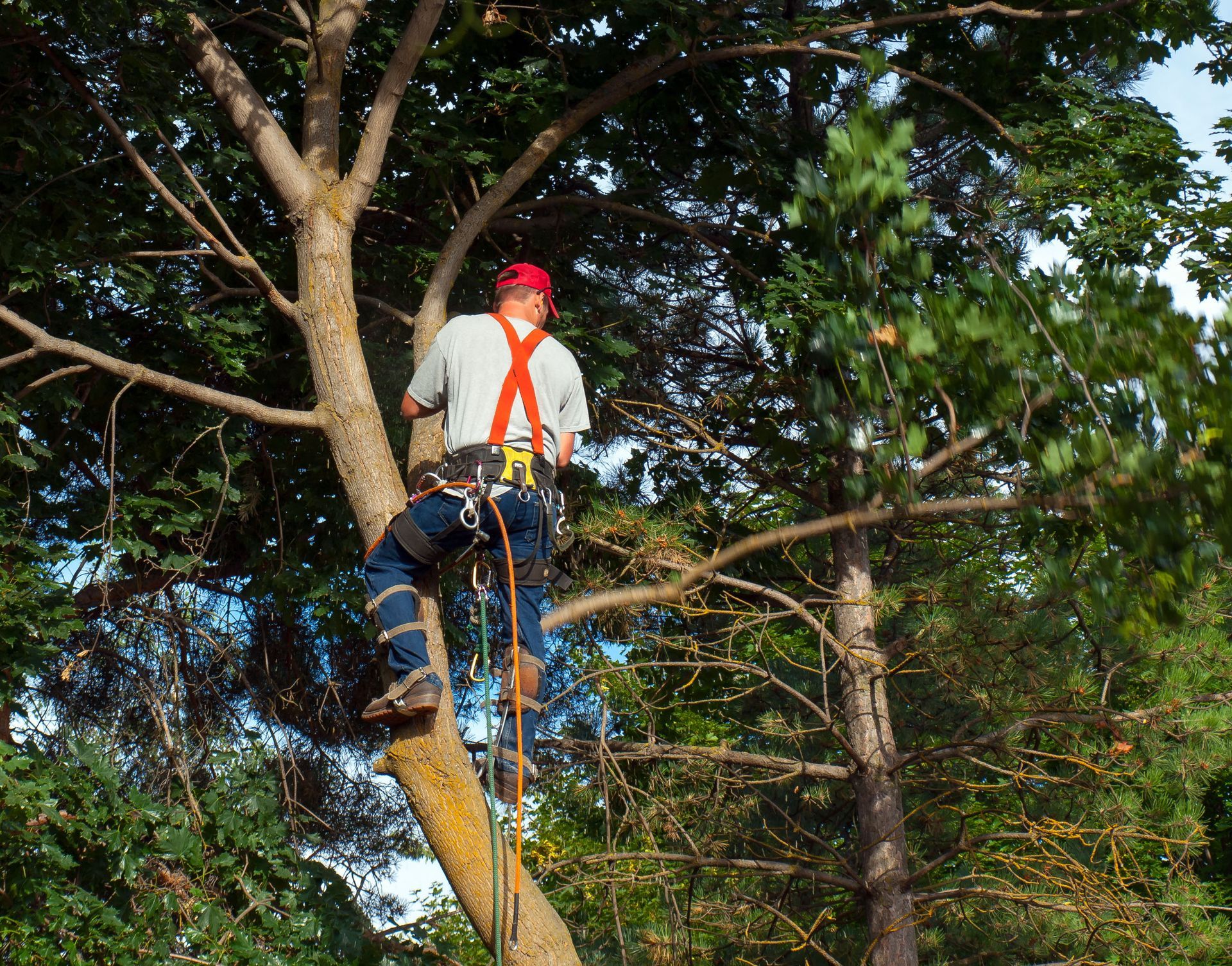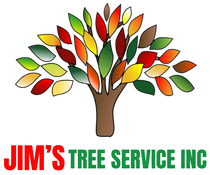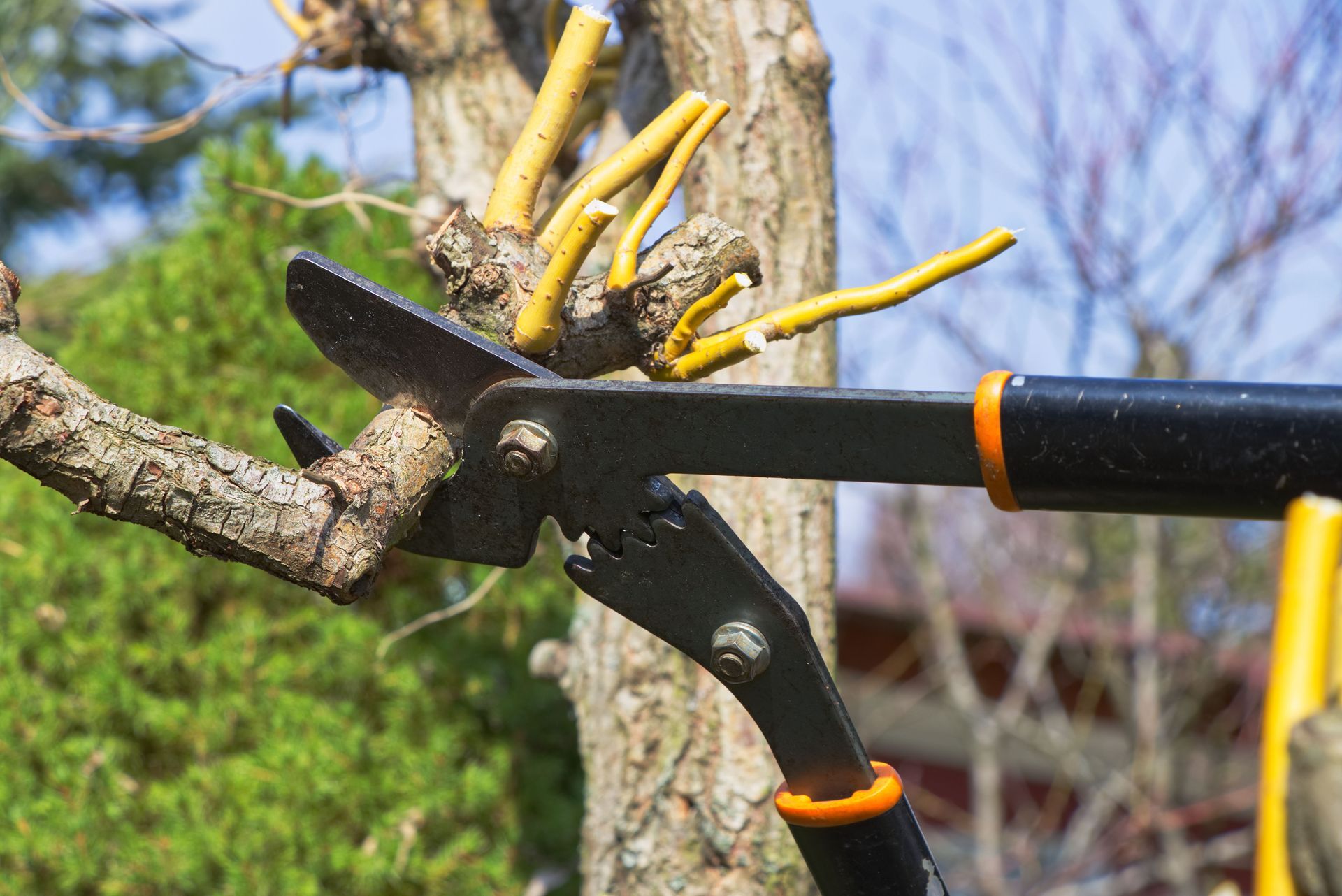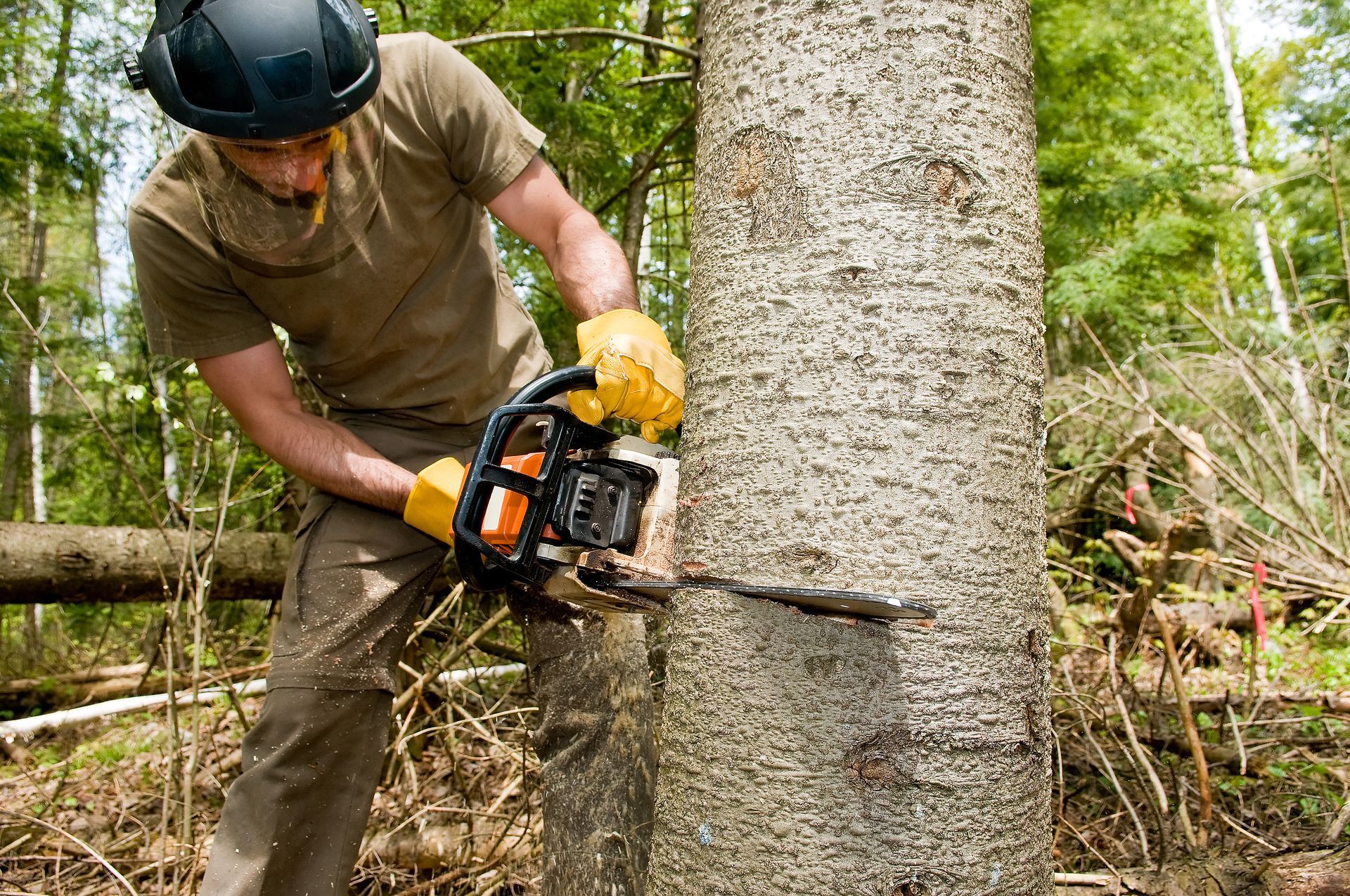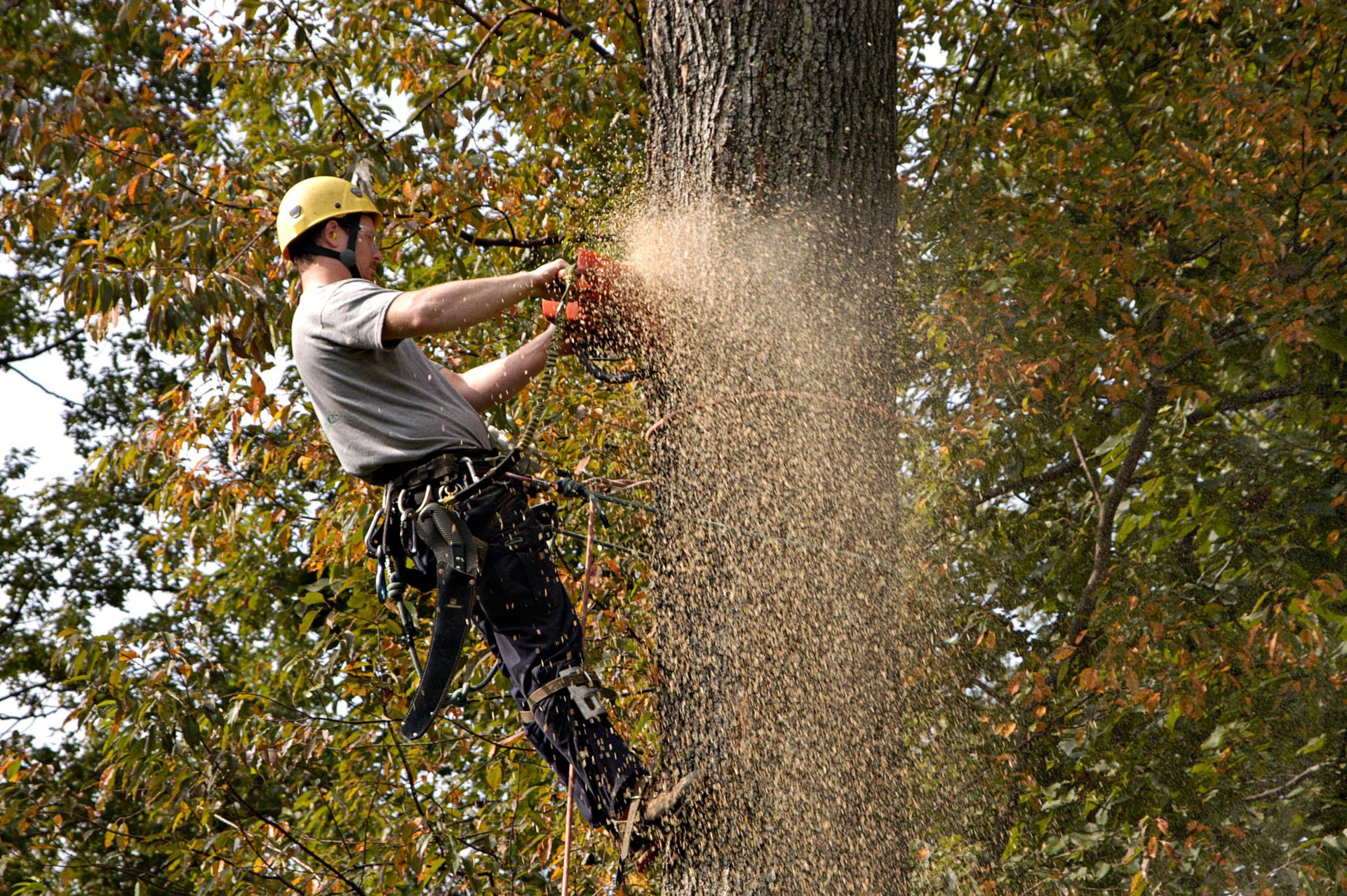July 31, 2025
Trees are a vital part of any landscape, offering shade, beauty, and environmental benefits. However, without regular maintenance, trees can become a source of significant property damage. A regular local tree trimming service serves as a crucial preventative measure not only against immediate threats but also against long-term property degradation. By regularly maintaining trees with a local tree trimming service, homeowners can avoid the financial burden of repairs and preserve the integrity of their property structures.
Minimizing the Risk of Falling Branches
Identifying Dangerous Branches
Identifying unstable branches early can prevent a host of problems. Trees can be susceptible to diseases that weaken their branches, making them prone to breaking. Signs of decay, such as discoloration or cracks, indicate that a branch may pose a risk. According to Lawn Love, trees shorter than 30 feet are generally classified as small, and those 60 feet or taller are considered large by most professionals. For the trees categorized as large, the impact of falling branches can be particularly destructive. Regular inspections by a local tree trimming service can help identify these dangerous branches before they cause harm to property or people.
Removing Weak or Dead Limbs
Once dangerous branches are identified, swift removal is essential to prevent accidents. Removing weak or dead limbs involves careful cutting to avoid damaging the tree. This process not only protects nearby structures but also promotes healthier growth patterns. Neglected, overgrown branches can exert pressure on roofs and power lines, leading to costly repairs. A local tree trimming service can trim these branches, mitigating direct damage from storms and ongoing structural stress.
Monitoring Tree Growth Patterns
Monitoring how branches grow is pivotal in preemptively addressing potential hazards. Trees may develop imbalanced growth patterns, with limbs reaching over property boundaries or obstructing pathways. Corrective pruning can steer growth in safer directions, preserving both tree health and property safety. The goal is to maintain a balanced canopy that allows for sunlight penetration and air circulation while preventing branches from encroaching on homes and infrastructure. This proactive approach significantly reduces the likelihood of property damage, especially during adverse weather conditions.
Weatherproofing Through Pruning
Weatherproofing trees through strategic pruning offers robust protection against storms. By eliminating weak and overcrowded branches, trees become more resilient to high winds and heavy rains. This proactive method also enhances root stability, reducing the risk of uprooting. In this regard, trees shorter than 30 feet, considered small, benefit immensely through precise pruning, allowing them to withstand climatic extremes better. Proper tree structure management ensures that they can flex and bend without succumbing to the pressure during severe weather events.
Preventing Hidden Damage to Property
Falling branches may cause immediate visible damage, but they can also inflict hidden harm that's costly over time. A branch crashing onto a roof might create leaks that only become evident after causing extensive interior damage. Similarly, fallen branches that are not promptly removed can rot, leading to pest infestations and further property degradation. Subtle yet expensive issues such as these emphasize the value of regular tree maintenance. By staying vigilant, homeowners can avoid these hidden costs and maintain their property's integrity.
Stopping Damage From Overgrown Roots
Understanding Root Systems
Roots are the unseen but powerful components of a tree that can profoundly affect the surrounding environment. As roots grow, they can extend far beyond the canopy, infiltrating spaces beneath buildings and roads. While essential for a tree’s stability and nutrient uptake, unchecked root expansion risks damaging foundations and underground utilities. Monitoring these growth patterns helps in curbing any potential property damage.
Checking Concrete and Structural Damage
One of the most common problems associated with overgrown roots is concrete damage. Driveways, sidewalks, and building foundations can crack as roots push through or underneath, leading to costly repairs. Regular monitoring and trimming can prevent roots from encroaching on these surfaces. Structural damage not only affects aesthetics but can also pose safety hazards if left unattended. By managing root growth early on, the structural integrity of property constructs can be preserved, saving substantial repair costs.
Avoiding Utility Line Interference
Tree roots can also interfere with underground utilities, leading to disruptions and expensive fixes. Water and gas lines, in particular, can be compromised by persistent root growth, causing leaks and potential hazards. Homeowners must be aware of how tree placement affects utility lines from the outset. Trimming and guiding root systems are simple yet effective steps to avoid these complex issues.
Promoting Healthy Root Growth
Promoting healthy root systems is essential for tree vitality and the surrounding property. This involves ensuring that roots grow in beneficial directions, free from any aggressive behaviors. Regular dome trimming above ground translates to controlled and non-invasive root expansion below. This is especially essential for smaller trees, ensuring they do not evolve into larger complications.
Knowing Root Trimming Techniques
Proper techniques in root trimming can safely manage root spread without harming the tree. Utilizing specialized tools designed for precision and minimizing stress on the tree can achieve successful root management. Pruning roots at the right time prevents overgrowth and keeps the tree healthy. Regular assessments are essential to identify when intervention is necessary, thus enabling timely and effective responses.
Protecting Homes From Tree-Related Pests
Recognizing Pest Harbors
Trees can unwittingly become harbors for pests that threaten the home environment. Signs that a tree is hosting pests include unusual markings, damage to foliage, or clusters of insects. These harbors often develop when tree maintenance is neglected, allowing pests to thrive unchecked. Infestations can quickly transition from trees to the home, bringing issues like structural damage and health hazards, which is why it is important to call a local tree trimming service before the situation gets worse.
Acknowledging the Effects of Pests
Pest infestations can severely compromise the structural integrity of homes. For instance, termites can consume wooden structures, leading to weaknesses and eventual collapses if not addressed. Other pests, like rodents, can breach a home's defenses through the tree-to-home pathways. The risks associated with pest invasions highlight the importance of ongoing tree maintenance and monitoring.
Implementing Pest Prevention
Maintaining tree health is an effective strategy for pest prevention. Healthy trees are less susceptible to infestations because they develop robust defenses against pests. Regular pruning and trimming eliminate potential nesting sites and remove dead material that attracts pests. By focusing on tree health, homeowners can prevent pest buildup that might otherwise transition into the home.
Utilizing Natural Pest Deterrents
Natural methods provide an environmentally friendly solution to prevent pests from inhabiting trees. Incorporating natural deterrents such as beneficial insect releases or botanical sprays can subtly repel pests. These approaches complement physical maintenance techniques like pruning to create an inhospitable environment for pests. By integrating these natural strategies, trees remain healthy and less attractive to unwanted invaders.
Collaborating With Pest Control Professionals
Partnering with pest control experts enhances pest prevention efforts while maintaining tree health. Professionals bring expertise, identifying risks that might be missed during casual inspections. They can suggest the most effective control measures tailored to specific tree species and local pest profiles. Collaboration ensures a comprehensive strategy is adopted, balancing pest management with the preservation of the tree's well-being.
Regular tree trimming is integral to property upkeep, offering numerous benefits that extend from the prevention of costly damages to enhanced aesthetics and safety. Contact Jim's Tree Service, Inc to hear more about our local tree trimming service today.
